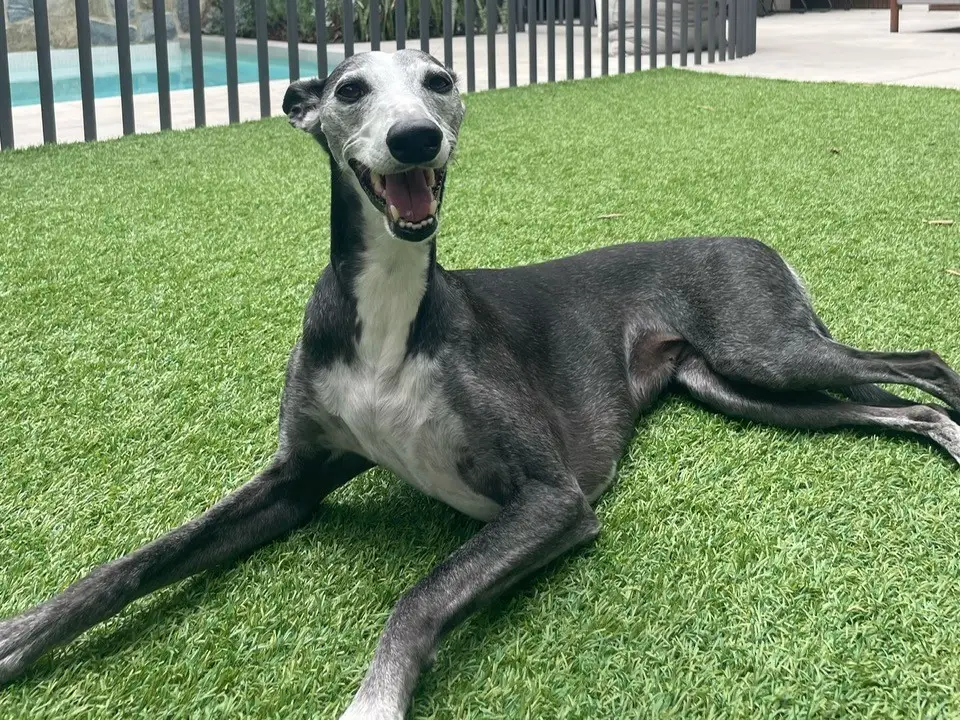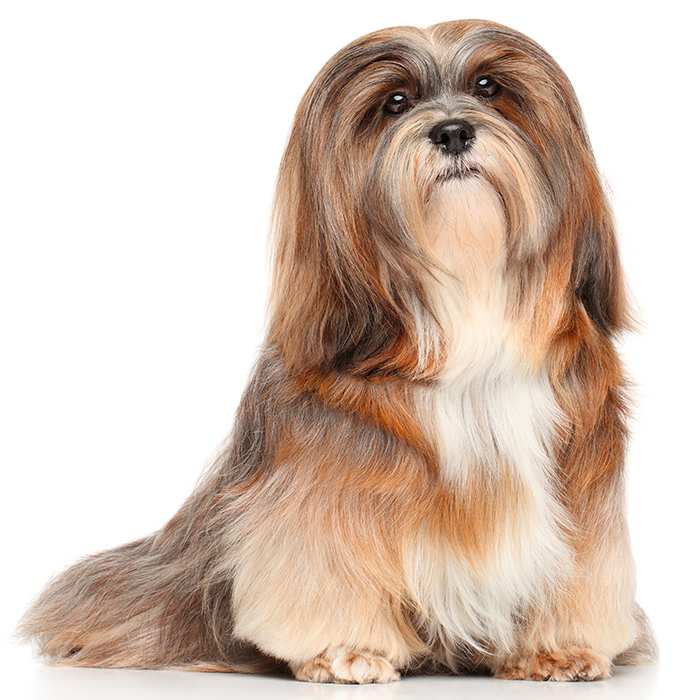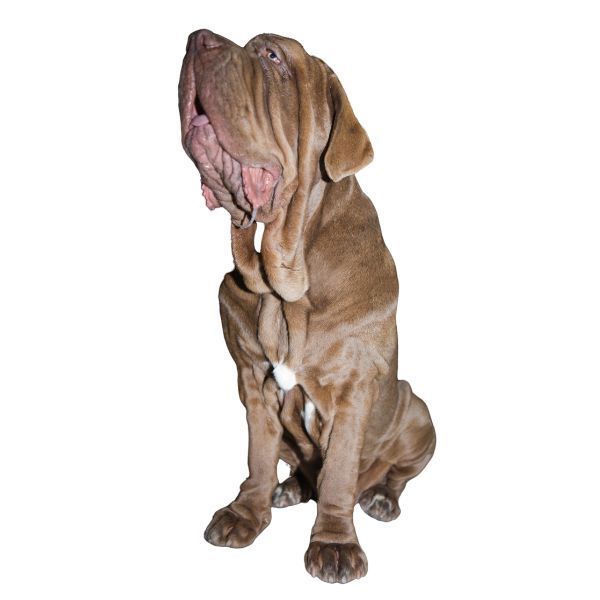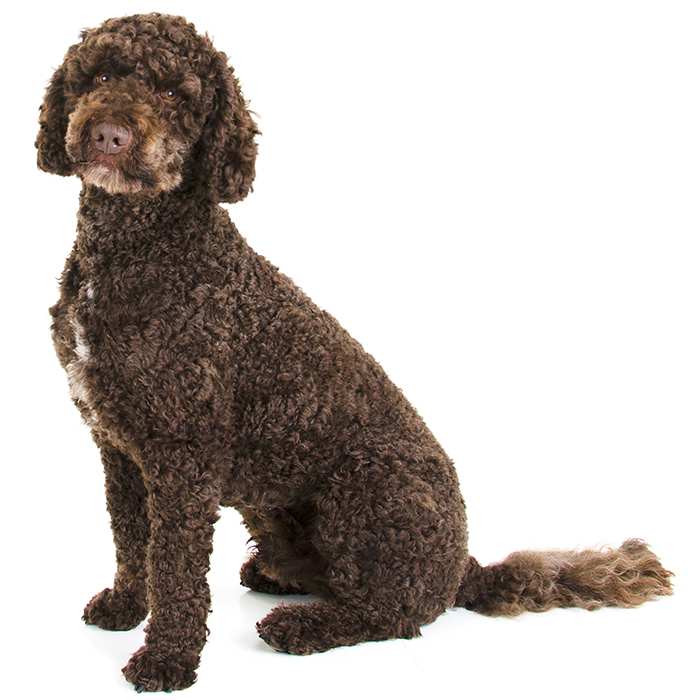Whippet
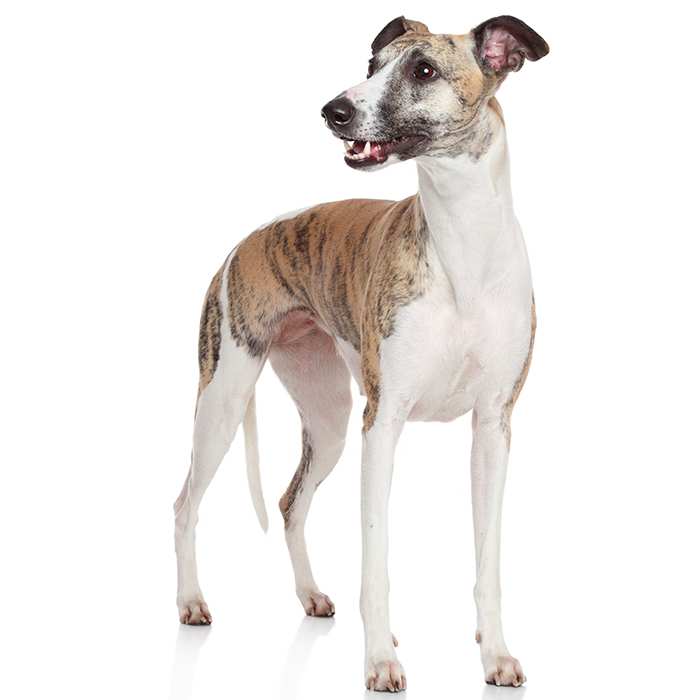

| Recommended for | Active individuals, families, and first-time dog owners |
| Breed Classification | Hound Group (Sighthound) |
| Other names | Snap Dog, English Whippet, Poor man's Greyhound |
| Lifespan | 12 to 15 years |
| Size | Medium |
| Temperament | Gentle, affectionate, quiet, independent |
| Intelligence | High; quick learners |
| Tendency to bark | Low; typically quiet |
| Maintenance Level | Low; minimal grooming |
| Health Risk | This breed has an average probability of having health issues in its lifetime, hence it is one of the more affordable breeds to insure. |
Insuring a Whippet?
Get our award-winning Nose-to-Tail Cover with up to $30k annual benefit limit, up to 90% of eligible vet bills back, and no sub-limits.
Get a quick quote
Is this breed right for you?
Try our breed selector quiz to find out your best matching breed!
Insuring a Whippet?
Get our award-winning Nose-to-Tail Cover with up to $30k annual benefit limit, up to 90% of eligible vet bills back, and no sub-limits.
Get a quick quote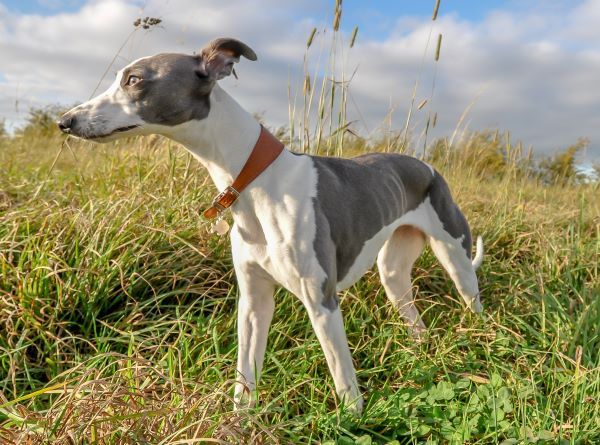
Breed history of Whippets
The Whippet originated during the mid to late 19th century in Northern England ,where smaller sized Greyhounds were crossed with small terriers, including possibly the Bedlington Terrier, to produce a medium sized, swift sighthound capable of hunting rabbits and other small game.
During this era, Whippets belonged mainly to the working class – factory and mine workers who worked hard and lived simple lives – and so became known as the “poor man’s greyhound” or the “poor man’s race horse”. On their free days, owners raced their Whippets in fields and on town roads. These races, in which the dogs typically ran a straight 200 yard track, became known as “rag races”, probably because a piece of cloth was used as a lure.
After the need for hunting dogs receded, Whippets gained a reputation as good racing dogs, leading to their export to nations all around the world. They were introduced to Australia in the late 19th or early 20th century, primarily brought over by British settlers, and quickly proved their usefulness in hunting small game like rabbits, which were becoming an agricultural pest.
Nowadays, while Whippets still excel at racing and lure coursing, the breed’s calm and gentle temperament has made it a popular a companion dog and family pet both in this country and worldwide.
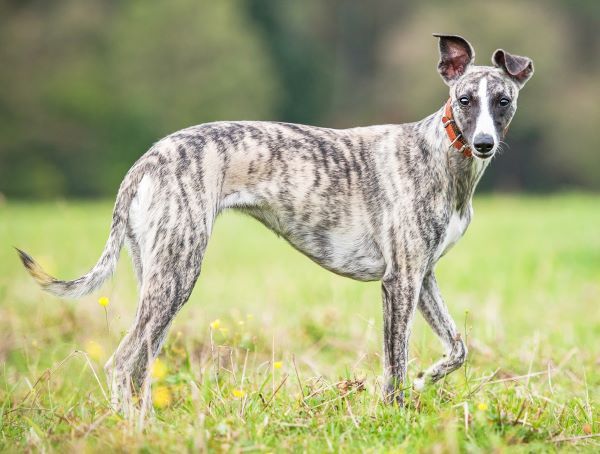
Physical description of Whippets
The Whippet is a medium-sized sighthound with a sleek, athletic build designed for speed and agility. Its lean yet muscular frame, deep chest, long legs, and narrow waist contribute to its streamlined appearance.
Whippets have long, tapered heads with large, expressive eyes, giving them a gentle and intelligent expression. Their small, rose-shaped ears fold back when relaxed but become more upright when alert. Their short, smooth coat lies close to the body and comes in various colours, including fawn, black, white, blue, brindle, and combinations of these shades.
The Whippet is often mistaken for its cousin the Greyhound. While Whippets are smaller than Greyhounds and not quite as quick, they are dubbed the fastest accelerator ‘off-the-mark’ of all breeds. They are the fastest dog for their weight, capable of running at 56 km/h.
| Weight range | 9 to 9 kg |
| Height range | 44 to 56 cm |
| Colours | Wide range of colours, including red, white, faun, black, spindle, red, blue, cream and any mix of these colours. |
| Coat length | Short, smooth and close-lying |

Whippet personality and temperament
Whippets are gentle, affectionate and independent dogs with a calm and friendly nature. They form strong bonds with their owners and enjoy companionship but are not overly demanding of attention. While they can entertain themselves, they do not like being left alone for long periods, preferring the company of their owners or other pets.
Whippets can thrive in various living environments, from apartments to larger homes, as long as they receive enough daily exercise. Indoor living suits the breed best and they have a reputation for being clean and respectful of furniture. They are also quiet dogs with a low tendency to bark, making them ideal for peaceful households.
While energetic outdoors, Whippets are surprisingly laid-back indoors, making them well-suited for families, singles, and first-time dog owners. In fact, they are considered to be almost lazy when at home; they love to lie on the bed or sofa and will often sleep for large portions of the day. It’s important to not mistake this behaviour for lethargy; it’s just in the breed’s nature to rest about the house when not being put to work.
Behavioural issues may arise if the Whippet isn’t given enough quality time with humans or is under-exercised, while separation anxiety can occur in the breed if left unattended for extended periods of time.
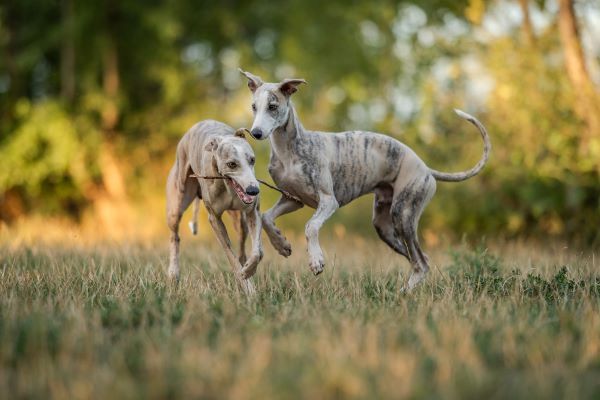
Whippets with kids and other pets
Whippets are loving, tolerant and gentle companions, making them a great choice for families, particularly those with children. They are playful without being overly excitable, making them well-suited for older children who can engage with them gently and respectfully. While they are generally patient and friendly, their sensitive temperament means they prefer a peaceful environment and may become timid around rough handling or loud play.
Whippets will show a great deal of tolerance towards kids and are very easy going, but don’t like excessive pestering; they can be startled easily and may over-react to a surprise. Young kids should always be supervised and those of all ages should be taught to approach the dog with care and to respect its personal space.
When it comes to other pets, Whippets are generally friendly and social, adapting well to multi-pet households, especially when introduced from a young age. They get along well with other dogs and rarely show aggression to other animals in the home, but their strong prey drive may lead them to chase smaller animals, such as cats or rabbits. Careful early socialisation and proper introductions help ensure they coexist peacefully with other pets.
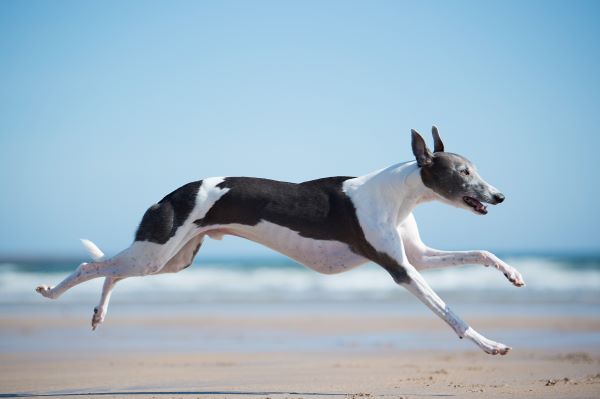
Whippet training and exercise
The Whippet is a very fast, highly athletic, and moderately energetic breed that thrives on daily exercise and mental stimulation. Though they are known for their incredible speed and agility, Whippets are not hyperactive dogs; rather, they enjoy a good balance between physical activity and relaxation.
They require daily walks, playtime, a good run once in a while, and opportunities to sprint in a secure area in order to stay healthy and happy. Activities like lure coursing, fetch, and agility training are ideal for engaging their natural instincts. Be aware that they are traditionally hunting dogs that tend to chase cars, smaller dogs or wild animals when off the leash.
Training a Whippet requires patience and consistency. Although they are intelligent, responsive to training and eager to please, they are sometimes independent-minded. They are sensitive dogs that respond best to gentle, positive reinforcement training, as harsh methods can make them timid. Early socialisation and consistent training will help them become well-mannered and confident companions. Their gentle and intuitive nature also makes them excellent candidates for therapy and assistance work.
| Energy level | High |
| Exercise requirements | High |
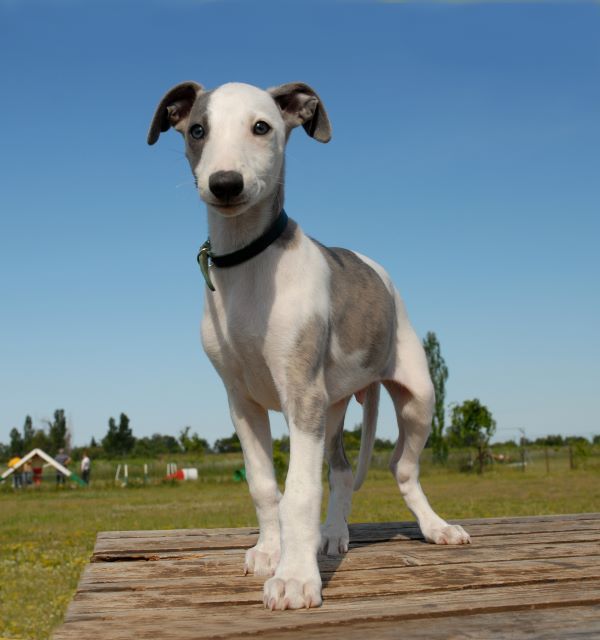
Whippet feeding and nutrition
Proper nutrition is essential for maintaining the health, energy, and lean physique of the Whippet. Because of their high energy levels and fast metabolism, they require a well-balanced diet rich in high-quality protein, healthy fats, and essential nutrients to support their muscle tone, coat health, and overall vitality.
As Whippets age, their nutritional needs change. Puppies require calorie-dense food to support rapid growth and development, while adult Whippets benefit from balanced meals that maintain muscle strength and sustained energy. Senior Whippets may require lower-calorie food with joint-supporting supplements to help maintain mobility and prevent age-related issues. Adjusting their diet as they grow ensures they stay healthy and active throughout their lives.
Since Whippets have a naturally lean build and little body fat, monitoring their calorie intake is crucial to prevent underweight issues or obesity, which can strain their joints. Regular mealtimes, portion control, and weight checks help maintain their ideal body condition. Consulting a veterinarian ensures they receive the appropriate diet tailored to their age, size, and activity level.
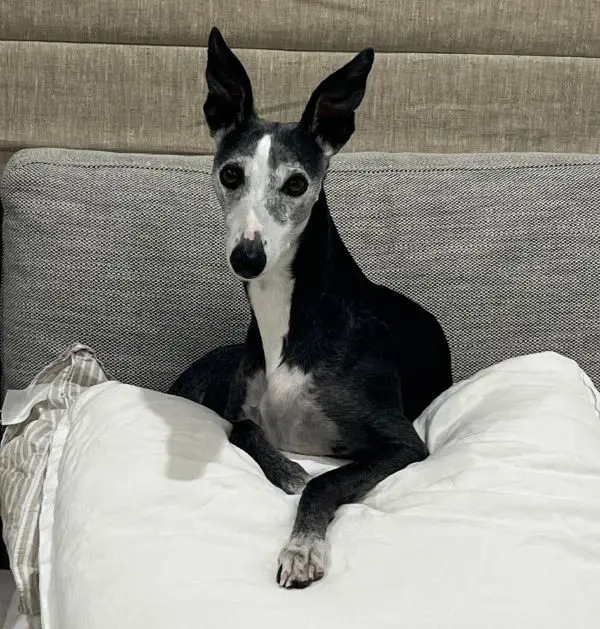
Whippet care and grooming
The Whippet has a short, smooth single coat that lies close to the body, making grooming relatively low maintenance. They are minimal shedders, but weekly brushing helps remove loose hair and keep their coat looking sleek. Their skin is delicate, so a soft-bristle brush or grooming mitt is recommended for keeping their coat healthy without irritation.
Bathing should be done as needed, usually every few months or when they get particularly dirty. Their nails should be trimmed regularly to prevent overgrowth, which can cause discomfort or mobility issues. Ear checks and cleaning are essential to avoid infections, as dirt and debris can accumulate. Dental care is also important, as Whippets can be prone to tartar buildup, making regular teeth brushing or professional cleanings necessary.
Since they lack an insulating undercoat and don’t have much body fat, Whippets are sensitive to cold weather and may require a coat or sweater in cooler climates.
Health issues for Whippets
- Hip Dysplasia, though less common in Whippets, can still occur. This condition affects the hip joint’s development, leading to pain, stiffness, and potential arthritis. Maintaining a healthy weight and regular exercise can help manage symptoms and improve mobility.
- Hypothyroidism, a condition where the thyroid gland underproduces hormones, leading to weight gain, lethargy, and coat thinning, can develop in Whippets. This condition is manageable with lifelong medication and dietary adjustments.
- Progressive Retinal Atrophy (PRA) is a genetic eye disorder that causes progressive vision loss and eventual blindness. Regular eye exams and genetic screening in breeding programs help reduce the risk.
- Cushing’s Disease occurs when the adrenal glands produce excess cortisol, leading to increased thirst, frequent urination, and weight gain. It is manageable with medication and regular veterinary monitoring.
- Dental Disease can occur in Whippets due to their narrow jaws, including tartar buildup, gum disease, and tooth loss. Regular teeth brushing, dental chews, and professional cleanings are essential for maintaining oral health.
- Environmental and food-related allergies can affect Whippets, causing itching, skin irritation, and excessive licking. Identifying and managing allergies through veterinary care and dietary adjustments is crucial.
Not all conditions are covered by Pet Insurance. For details of Bow Wow Meow Pet Insurance cover, refer to the Product Disclosure Statement.
Thinking about insuring a Whippet
Thinking about insuring a Whippet
Learn moreThinking about insuring a Whippet
Learn moreFree engraved pet ID tag on sign up3
Customer Satisfaction
21 day cooling off
Easy to use Pet Portal

GapOnly® in vet claims
MORE INFORMATION
The Whippet Club NSW Inc: http://www.whippetclubnsw.com/
The Whippet Association of Victoria Inc: https://www.whippetvic.com/
The Whippet Club of Queensland: https://whippetclubqld.com/
The Whippet & Greyhound Club of SA Inc: https://www.whippetgreyhoundclubsa.com/

